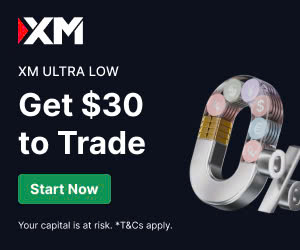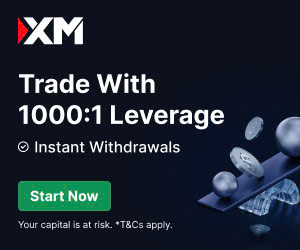
9 minute read
XM vs Bingx: A Comprehensive Comparison
In the fast-evolving world of online trading, choosing the right platform can make or break your success. Two prominent names often come up in discussions: XM vs BingX. While XM is a well-established forex and CFD broker, BingX has gained traction as a leading cryptocurrency exchange with unique social trading features. But which platform is better suited for your trading needs? In this comprehensive comparison, we’ll dive deep into XM vs BingX, exploring their features, fees, usability, security, and more to help you make an informed decision.
This guide is designed to provide traders—whether beginners or seasoned professionals—with a clear understanding of how these platforms stack up. Let’s get started!

💥 Trade with XM now: Open An Account or Visit Brokers 🏆
Overview of XM vs BingX
Before diving into the nitty-gritty, let’s briefly introduce each platform.
What is XM?
Founded in 2009, XM is a Cyprus-based forex and CFD broker regulated by top-tier authorities like ASIC (Australia), CySEC (Cyprus), and FSC (Belize). With over 10 million clients worldwide, XM offers trading on a wide range of instruments, including forex, stocks, commodities, indices, and cryptocurrencies. Known for its user-friendly platforms (MetaTrader 4 and MetaTrader 5), XM caters to traders of all experience levels with competitive spreads, educational resources, and robust customer support.
What is BingX?
Launched in 2018, BingX is a Singapore-based cryptocurrency exchange that emphasizes social trading. It allows users to trade over 750 cryptocurrencies, including Bitcoin, Ethereum, and altcoins, alongside forex, commodities, and indices. BingX’s standout feature is its copy-trading system, enabling beginners to mimic the strategies of experienced traders. With low fees and a focus on user engagement, BingX has quickly become a favorite among crypto enthusiasts.
Key Differences Between XM and BingX
While both platforms cater to traders, their core offerings differ significantly. Here’s a quick overview of their primary distinctions:
· Market Focus: XM specializes in forex and CFDs, while BingX focuses on cryptocurrency trading with additional forex and commodity options.
· Trading Platforms: XM uses MetaTrader 4 and 5, while BingX offers a proprietary platform with advanced charting tools.
· Social Trading: BingX excels with its copy-trading feature, which XM lacks.
· Regulation: XM is heavily regulated by multiple authorities, whereas BingX operates with less stringent oversight.
· Asset Variety: XM offers over 1,000 instruments, while BingX provides 750+ crypto pairs and other assets.
Now, let’s break down the comparison across key categories to help you decide which platform aligns with your goals.
1. Trading Instruments
XM: Diverse Asset Classes
XM shines when it comes to asset variety. Traders can access:
· Forex: Over 55 currency pairs, including majors, minors, and exotics.
· CFDs: Stocks, indices, commodities (e.g., gold, oil), and energies.
· Cryptocurrencies: Bitcoin, Ethereum, Litecoin, and more.
· Metals: Gold, silver, and palladium.
This diversity makes XM ideal for traders looking to diversify their portfolios across multiple markets. Whether you’re into forex scalping or long-term stock CFD investments, XM has you covered.
BingX: Crypto-Centric with Broader Options
BingX is primarily a crypto exchange, offering:
· Cryptocurrencies: 750+ trading pairs, including major coins like BTC and ETH and lesser-known altcoins.
· Derivatives: Perpetual futures with up to 125x leverage.
· Forex and Commodities: Limited forex pairs and commodities like gold and oil.
· Indices: Global indices such as the S&P 500.
While BingX’s crypto selection is impressive, its forex and commodity offerings are less extensive than XM’s. If cryptocurrencies are your primary focus, BingX is a strong contender.
Verdict: XM wins for asset diversity, but BingX is better for crypto enthusiasts.
2. Trading Platforms and Tools
XM: MetaTrader Mastery
XM relies on the industry-standard MetaTrader 4 (MT4) and MetaTrader 5 (MT5) platforms, known for their:
· Customizability: Extensive charting tools, indicators, and Expert Advisors (EAs) for automated trading.
· Accessibility: Available on desktop, web, and mobile (iOS and Android).
· Stability: Reliable performance with minimal downtime.
XM also offers a mobile app for on-the-go trading and a web-based platform for quick access. For beginners, the platforms may have a learning curve, but XM provides ample educational resources to ease the process.
BingX: Proprietary Platform with Social Features
BingX’s proprietary platform is designed with simplicity and functionality in mind. Key features include:
· Advanced Charting: Built-in TradingView tools for technical analysis.
· Copy-Trading: Follow and replicate trades from top traders with transparent performance metrics.
· Grid Trading Bots: Automate trading strategies for passive income.
· Demo Trading: Practice with virtual funds to test strategies risk-free.
The platform is intuitive, making it beginner-friendly, and its mobile app is highly rated for seamless trading. However, it lacks the depth of MT4/MT5 for advanced traders.
Verdict: XM is better for advanced traders who prefer MetaTrader, while BingX suits beginners and those interested in copy-trading.
3. Fees and Spreads
XM: Competitive but Variable
XM’s fee structure varies by account type (Micro, Standard, Ultra Low, or Shares). Key points:
· Spreads: Start from 0.6 pips on Ultra Low accounts, but higher (1.6–2 pips) on Standard accounts.
· Commissions: Zero on most accounts, except Shares accounts.
· Swap Fees: Charged for overnight positions, with swap-free accounts available for Islamic traders.
· Deposit/Withdrawal Fees: None for most methods, though some e-wallets may incur charges.
XM’s spreads are competitive for forex but can be higher for cryptocurrencies compared to dedicated crypto exchanges.
BingX: Low Trading Fees
BingX is known for its cost-effective fee structure:
· Trading Fees: 0.05%–0.2% for spot trading; futures fees are similarly low.
· Copy-Trading Fees: A small percentage (e.g., 5%–10%) of profits goes to the lead trader.
· Deposit/Withdrawal Fees: Crypto deposits are free, but withdrawals incur network fees.
· No Fiat Deposits: BingX does not support fiat, which may require additional conversion fees elsewhere.
BingX’s low fees make it attractive for high-frequency crypto traders, but the lack of fiat support can be a drawback.
Verdict: BingX offers lower fees for crypto trading, while XM is more cost-effective for forex and CFDs.
4. Regulation and Security
XM: Top-Tier Regulation
XM is a highly regulated broker, ensuring a secure trading environment:
· Regulators: ASIC, CySEC, FSC, and DFSA.
· Client Fund Protection: Segregated accounts and negative balance protection.
· Transparency: Clear policies on execution and pricing.
As a Market Maker, XM acts as a counterparty to trades, which may raise concerns about conflicts of interest. However, its strong regulatory oversight mitigates these risks.
BingX: Limited Regulation
BingX operates with less regulatory oversight:
· Regulation: Registered in Singapore, but not regulated by top-tier authorities like ASIC or CySEC.
· Security: Implements two-factor authentication (2FA), cold storage for crypto, and ShieldX for enhanced protection post-2024 hack.
· Transparency: Transparent copy-trading metrics, but less clarity on execution policies.
While BingX has improved its security measures, its regulatory framework is less robust than XM’s, which may concern risk-averse traders.
Verdict: XM is the safer choice due to its stringent regulation.

💥 Trade with XM now: Open An Account or Visit Brokers 🏆
5. Copy-Trading and Social Features
XM: Limited Social Trading
XM does not offer copy-trading or social trading features. Instead, it focuses on:
· Educational Resources: Webinars, tutorials, and market analysis.
· Signal Providers: Available through MetaTrader’s MQL5 community, but not integrated into the platform.
This lack of social trading may disappoint beginners seeking to follow expert strategies.
BingX: Social Trading Leader
BingX’s copy-trading feature is a game-changer:
· Access to Top Traders: Browse profiles with detailed performance stats (e.g., ROI, win rate).
· Automation: Automatically replicate trades with customizable risk settings.
· Community Engagement: Interact with traders via social feeds and forums.
This feature makes BingX ideal for novices who want to learn from experienced traders without making complex decisions.
Verdict: BingX dominates in social trading and copy-trading.
6. User Experience and Support
XM: Robust Support
XM prioritizes user experience with:
· Customer Support: 24/7 live chat, email, and phone support in multiple languages.
· Account Types: Four options to suit different trading styles.
· Demo Account: Free practice account with virtual funds.
· Educational Tools: Extensive resources for beginners and pros.
The MetaTrader platforms, while powerful, may feel dated to some users.
BingX: Beginner-Friendly
BingX offers a modern, intuitive interface:
· Customer Support: 24/7 live chat and email, though response times can vary.
· Demo Trading: Practice with virtual funds.
· Educational Content: Guides and videos focused on crypto and copy-trading.
· Community Focus: Social features foster engagement.
BingX’s platform is easier to navigate for beginners, but its support can be less responsive than XM’s.
Verdict: XM offers better support, while BingX excels in usability for beginners.
7. Bonuses and Promotions
XM: Attractive Incentives
XM frequently offers promotions, such as:
· Welcome Bonus: Up to $5,000 on first deposits (terms apply).
· Loyalty Program: Earn points for trading, redeemable for bonuses.
· Contests: Cash prizes for trading competitions (e.g., $100,000 in 2023–2024).
These bonuses are subject to strict conditions, so read the fine print.
BingX: Crypto-Focused Rewards
BingX’s promotions include:
· New User Bonuses: Up to 100 USDT for completing tasks like trading or depositing.
· Trading Competitions: Cash and crypto prizes for top performers.
· Referral Program: Earn rewards for inviting friends.
BingX’s bonuses are crypto-centric and often tied to trading volume.
Verdict: Both platforms offer compelling bonuses, but XM’s are more diverse.
Pros and Cons
XM Pros
· Highly regulated by ASIC, CySEC, and others.
· Wide range of trading instruments (1,000+).
· Competitive spreads and zero-commission accounts.
· Robust MetaTrader platforms.
· Excellent customer support and educational resources.
XM Cons
· No copy-trading or social trading features.
· Higher spreads on some account types.
· Market Maker model may raise conflict-of-interest concerns.
BingX Pros
· Low trading fees (0.05%–0.2%).
· Strong copy-trading and social trading features.
· Extensive crypto selection (750+ pairs).
· Beginner-friendly platform with demo trading.
· Advanced charting and grid trading bots.
BingX Cons
· Limited regulation compared to XM.
· No fiat deposit/withdrawal support.
· Fewer forex and commodity options.
Who Should Choose XM?
XM is ideal for:
· Forex and CFD Traders: Those focused on currency pairs, stocks, or commodities.
· Regulated Environment Seekers: Traders prioritizing security and transparency.
· Advanced Traders: Users comfortable with MetaTrader and complex strategies.
· Diversified Portfolios: Investors trading across multiple asset classes.
If you value regulation, asset variety, and professional-grade platforms, XM is the better choice.
Who Should Choose BingX?
BingX suits:
· Crypto Enthusiasts: Traders focused on cryptocurrencies and derivatives.
· Beginners: Those who want to leverage copy-trading to learn from experts.
· Low-Cost Traders: Users seeking minimal fees for high-frequency trading.
· Social Traders: Individuals who enjoy community-driven platforms.
If crypto trading and social features are your priorities, BingX is the way to go.
Final Thoughts: XM vs BingX in 2025
Choosing between XM vs BingX depends on your trading goals, experience level, and preferred markets. XM stands out as a reliable, regulated broker with a vast array of instruments and professional tools, making it perfect for forex and CFD traders. BingX, on the other hand, excels in the crypto space with its innovative copy-trading feature and low fees, catering to beginners and crypto enthusiasts.
For a well-rounded trading experience with strong oversight, XM is the safer bet. If you’re diving into cryptocurrencies and want to leverage social trading, BingX offers unmatched value. Ultimately, both platforms have unique strengths, and your choice should align with your trading style and objectives.
💥 Note: To enjoy the benefits of the partner code, such as trading fee rebates, you need to register with XM through this link: Open An Account or Visit Brokers 🏆
Read more:

